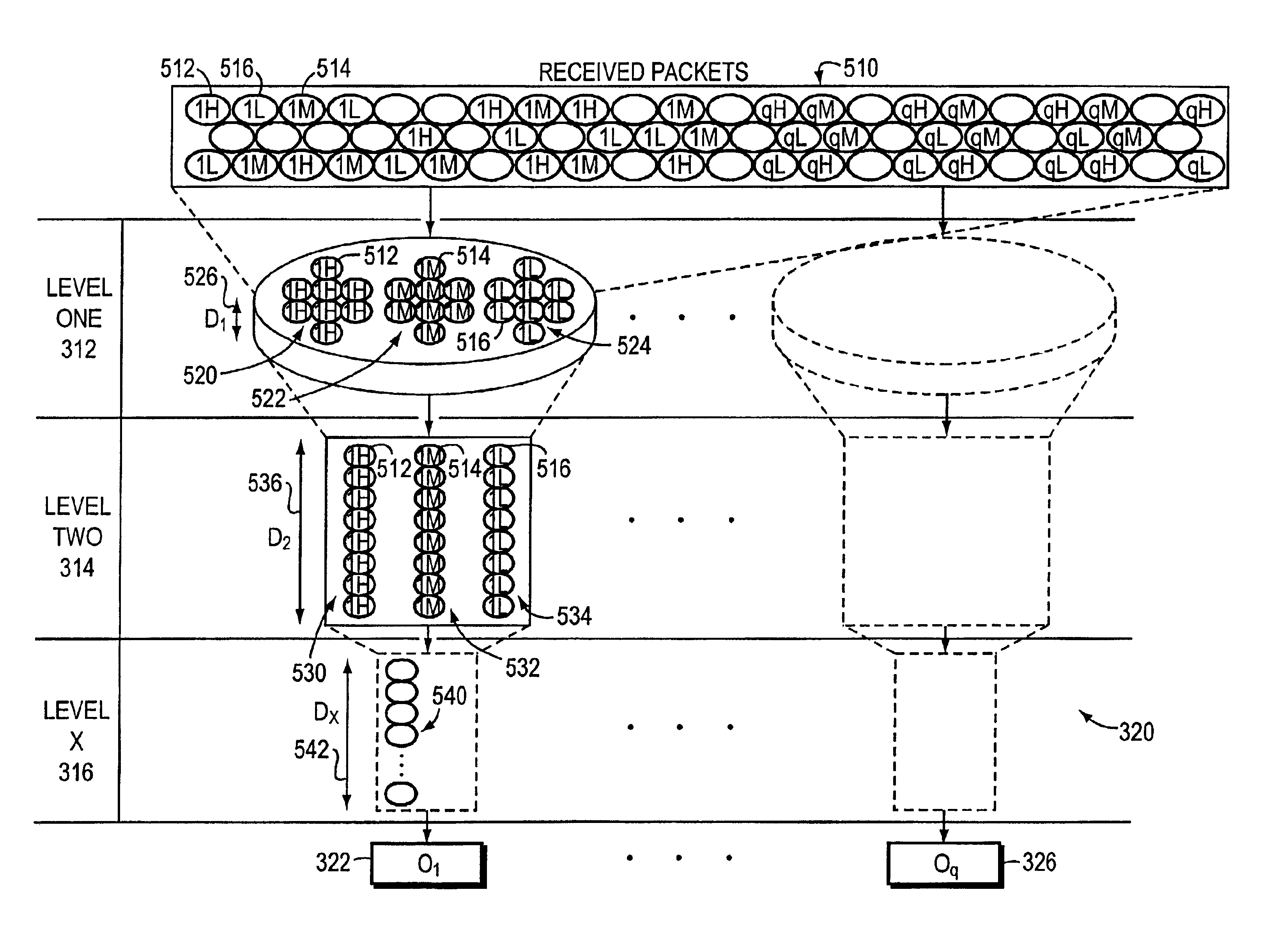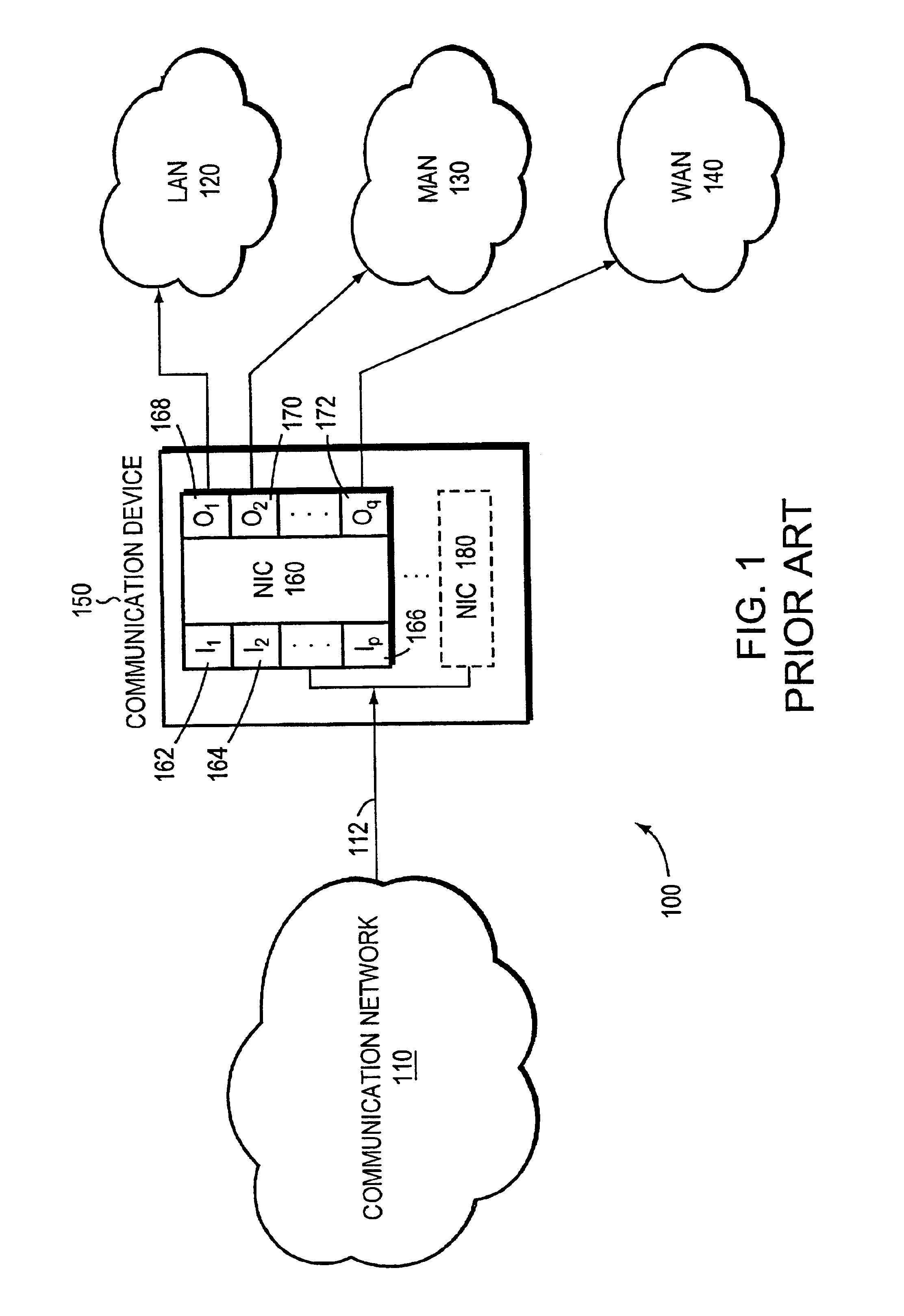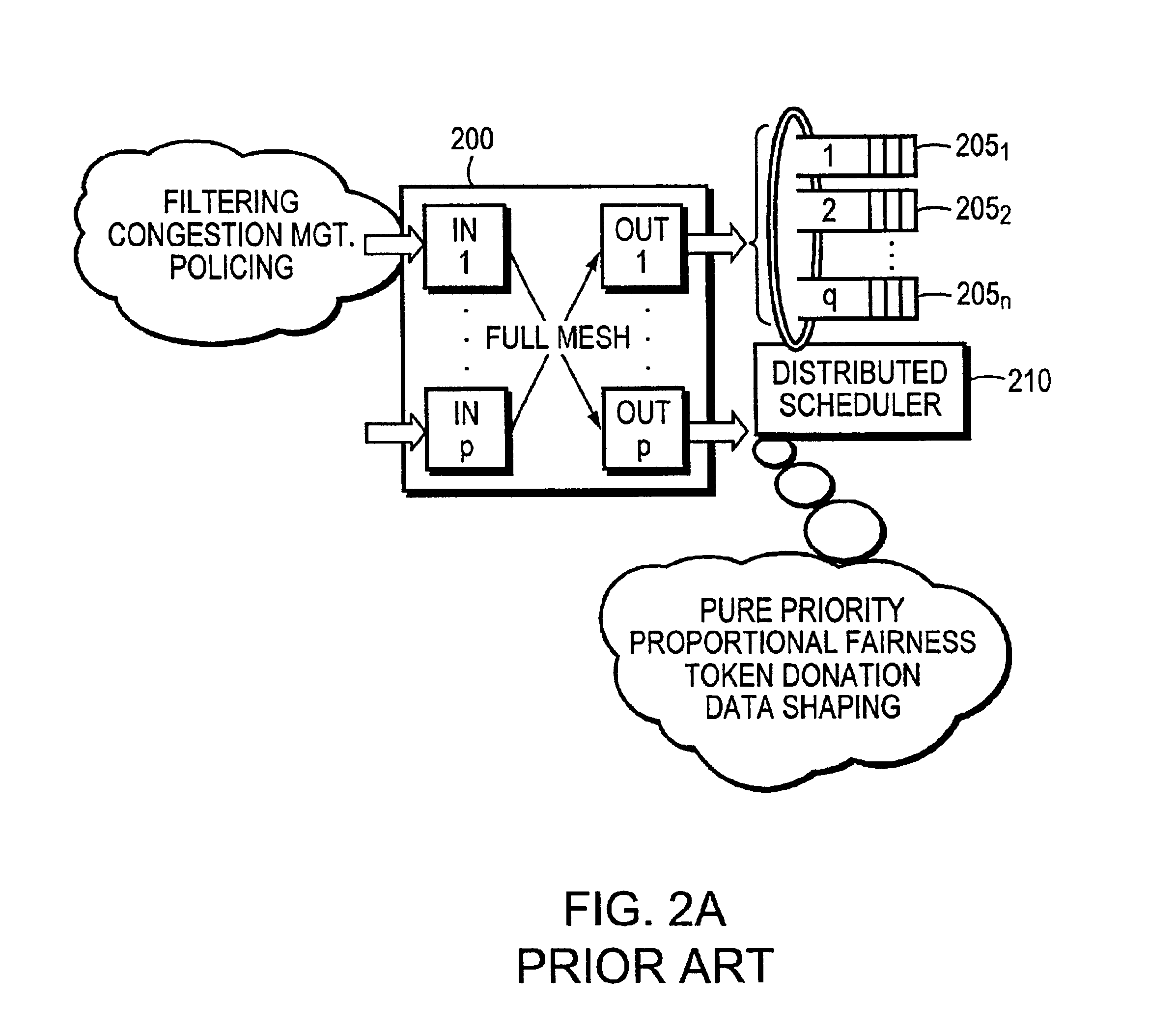Hierarchical output-queued packet-buffering system and method
- Summary
- Abstract
- Description
- Claims
- Application Information
AI Technical Summary
Benefits of technology
Problems solved by technology
Method used
Image
Examples
Embodiment Construction
Brief Summary of the Invention
The present invention utilizes a hierarchically organized output-queuing system that permits scaling of full-mesh architectures to bandwidth aggregation levels ordinarily associated with partial-mesh systems. Moreover, the architecture of the present invention facilitates output-side traffic engineering control, thereby accommodating sophisticated de-queuing schemes that respect packet priority levels.
In one embodiment, a packet-buffering system and method incorporating aspects of the present invention is used in transferring packets from a series of input ports to a series of output ports in a communication device that is coupled to a communications network. The system buffers the packets received over the communications network in a hierarchical packet-buffering architecture, comprising two or more levels of memory / packet buffers rather than in a single memory as in the prior art.
A first packet buffer is organized into a first series of queues. The fi...
PUM
 Login to View More
Login to View More Abstract
Description
Claims
Application Information
 Login to View More
Login to View More - R&D
- Intellectual Property
- Life Sciences
- Materials
- Tech Scout
- Unparalleled Data Quality
- Higher Quality Content
- 60% Fewer Hallucinations
Browse by: Latest US Patents, China's latest patents, Technical Efficacy Thesaurus, Application Domain, Technology Topic, Popular Technical Reports.
© 2025 PatSnap. All rights reserved.Legal|Privacy policy|Modern Slavery Act Transparency Statement|Sitemap|About US| Contact US: help@patsnap.com



